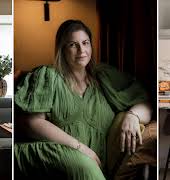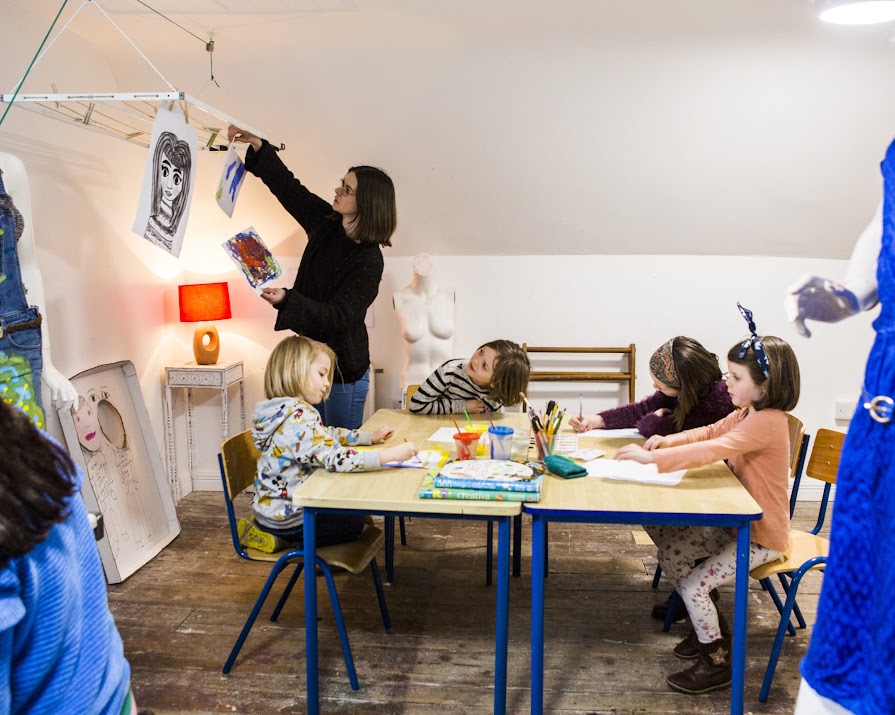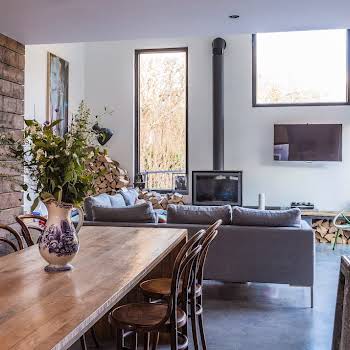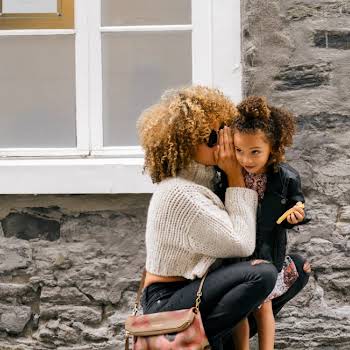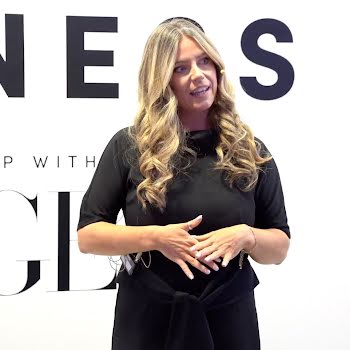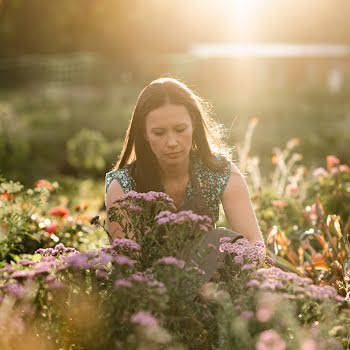
By IMAGE
23rd Aug 2019
23rd Aug 2019
Sligo Sudbury School. Pics: Orla Neligan
Alternative schooling is on the rise, as we acknowledge that one size does not fit all. Orla Neligan visits the Sudbury School in Sligo, where the founders believe that children are their own best teachers.
It’s 10am on a Tuesday morning and 12-year-old Sean Boni has arrived at the Sligo Sudbury School. He has no set timetable, no official “class” or “classroom” to attend; he is free to do whatever he wishes for the day, whether that’s playing outside, practising maths or learning a new musical instrument.
It’s called a school, but the Sligo Sudbury School – one of two currently established in Ireland – bears no hallmarks of the traditional school as we know it.
Helicopter parent
It’s every helicopter parent’s worst nightmare, but research has shown that this democratic, child-led approach to education to be highly beneficial for fostering learning, growth and confidence in children. Modelled after the first Sudbury Valley School set up in Massachusetts in 1968, it allows children to be free to follow their passions and interests in a self-directed way; the more traditional school skills, such as reading, writing and maths, acquired at their own pace, after they begin showing an interest in them. Not when a staff member dictates it is time to learn.
“Cue nightmarish visions of children running amok, playing computer games all day long or barely able to string a sentence together by the age of 10.”
As different as parents may be, most would agree that they would want schools to teach their children about core values such as responsibility and respect. Most would encourage an environment that fosters creativity, empathy and independence.
Computer games
These values underpin the foundation of democratic schools like Sudbury and yet most of us baulk at the very idea of sending our children somewhere where essentially the school is run, in part, by the children themselves.
Cue nightmarish visions of children running amok, playing computer games all day long or barely able to string a sentence together by the age of 10. But the opposite seems to be true, giving plenty of worthy credit to children’s willingness to learn.

“Children are naturally curious,” says Gayle Nagle, who co-founded the Sligo school with Maura Duignan. “We are all hard-wired to learn and absorb stimuli from a young age, and there’s a lot of research that confirms how, in today’s fast-paced society with plenty of distractions, doing nothing is important. Allowing space and time for the child to figure out what they are really interested in can be more fruitful in the long-term.”
“It begs the question whether alternative schooling might suit those children who fall through the cracks of the mainstream system, who might, for example, be suffering with anxiety or stress.”
It is based on an existential view of life that you are the sum of your choices, but democratic schools have taken the angst out of education; students like going there, exactly because they get to choose.
Maria Montessori
Maria Montessori, responsible for the method of education that bears her name, once wrote: “The teacher’s task is not to talk, but to prepare and arrange a series of motives for cultural activity in a special environment made for a child.” At the turn of the century, this ethos could be considered revolutionary, but today, it still burns bright, challenging the current mainstream model and opening parents and families up to alternative schooling options, whether that’s in a democratic Sudbury School or at home.

This throws some shade on the current mainstream education model, which some believe has reached its sell-by date. Designed during the industrial revolution, it smacks of factory-management: students segregated into groups, bells to determine when they can move from one subject to the next, clocking in and clocking out at particular hours… The result can be disengagement as a result of a lack of autonomy.
“There’s no one size fits all,” says child psychologist Julie Meehan, whose daughters Clariana and Amie attend Sudbury in Sligo. “My feeling is that this way of teaching – that there is a right way to do things – can instill a huge amount of conditioning in kids and unfortunately, conditioning can take a lifetime to undo.”
“It is a democracy in its purist form. There is no principal or teachers, just staff members.”
That’s not to say Sudbury is rule-free. With freedom comes responsibility, and everyone must work towards upholding the school principles, which are based on freedom, trust and responsibility. All behaviour falls in line with a culture of respect, consideration and trust in the school, and everyone has the right to go about their day uninfringed and in a peaceful way. Parents must also trust that their child can make their own decisions.
“The school is governed by a weekly meeting that every child and adult attends and where school matters are debated and voted upon.”
There is structure too, and the students create every bit of it. It is a democracy in its purist form. There is no principal or teachers, just staff members. The school is governed by a weekly meeting that every child and adult attends and where school matters are debated and voted upon, from starting a carpentry class to whether to allow screen time – a six-year-old’s opinion as important as an adult’s.

“Despite what people may think, it’s not a free-for-all,” notes Nagle. “It’s about respecting boundaries and living in a community. But rather than set limitations, we try to bring awareness to issues.”
Gayle’s position as a former principal of a mainstream school has afforded her a dual perspective, and while she garnered huge experience and respect for the more formal system, she favours a model that adapts to the child as opposed to the other way around. “I have huge respect for traditional school methods, but believe it’s not a great fit for all. I’m more interested in finding a way to move the system around a bit rather than expect the child to adapt to it.”
Leaving Cert
On paper, there is plenty in the formal education system to light up passions in students, but because the end game is the Leaving Cert and all the assessment and competition that comes with that, Nagle believes it runs the risk of narrowing the vision of students, with a lot of lip service being paid to get points instead of following passions.
Liz Caffrey, principal of Mount Anville Secondary School in Dublin, has seen how an over-reliance on a formal curriculum without reference to students’ preferences can dampen curiosity. “It can lead to negative behaviours, but our job as educators is to help children be excited about learning, to inspire them.”
“Boundaries and structure allow children to feel safe, even if they rebel against them.”
Caffrey advocates a structured environment for learning, as long as it takes into account the individual strengths of the student, teachers taking a less directional approach as students become more responsible for their learning in what she describes as “scaffolded learning”.
Psychotherapist Siobhán Murray also believes structure to be an important ingredient for education. “Boundaries and structure allow children to feel safe, even if they rebel against them.”
Children thrive
Without boundaries, children actually have nothing to rebel against, and even the act of pushing boundaries is part of growing up and maturing. Traditional schooling gives children the safety net, the routine and structure, to worry less about the unknown.” Child psychologist Dr Malie Coyne agrees that children thrive on rules at schools, but also thrive on boundaries set by their parents at home.
“As long as there is some structure within their day and they know what to expect, children can do well in any educational environment.”

Some parents who homeschool their children would tend to disagree. Brídín Nic Dhonncha has been homeschooling her two sons for the last two years and follows the “unschooling” method. There is no curriculum, no structure or “teaching” as such. Instead, her sons Lucas and Peader-Jim discover what they want to learn each day. “I like them to learn how to learn,” explains Brídín, who might guide them towards books or information, but allows them the freedom to do it themselves.
This loose structure is one that works well for Lucas, who struggled in mainstream school. “He wasn’t great in groups and got very distracted and frustrated. He’s way more focused now and shows genuine interest in the things he wants to learn.”
Similarly, Jennie Clarke, who is currently part of the management team developing a Sudbury School in Galway, opted to homeschool her middle son after discovering his anxiety was directly linked to the more formal school he was attending. “He’s a very curious boy and loves learning, but felt stifled in school.
Within a few weeks of homeschooling, a different child emerged. He was more confident and would immerse himself in science and history projects with great intensity.” It begs the question whether alternative schooling might suit those children who fall through the cracks of the mainstream system; who might, for example, be suffering with anxiety or stress.

Nagle is quick to point out that of the 15 students who attend Sudbury Sligo, nearly all are there because their parents believe in a freedom of learning and not because they were unhappy or having difficulties in mainstream schools. “I was really happy in my school, but I didn’t have a lot of choice,” notes Sudbury student Sean Boni.
“I got to know my own character much better while learning at home. I did get a bit lonely sometimes, though,” admits Sean. “Sudbury is exactly like being homeschooled, but it’s more fun because there’s more kids to hang out with.”
Homeschool isolation
Being socially isolated is one of the risks of being homeschooled. But with figures from Tusla (tusla.ie) showing 1,434 children currently being homeschooled in Ireland, it’s evidently on the rise. “People homeschool for so many reasons,” notes Cora McCauley of HEN (Home Education Network, henireland.org). Their children may be having difficulty in mainstream schools, it could be because they travel or move a lot or want to explore new ways of learning.”
She confirms there is a huge HEN network in Ireland, so families don’t have to be socially isolated and can meet up with other homeschooled kids. “I would find being with 25 other 12-year-olds a bit isolating,” says McCauley. “How broad is your experience going to be?” According to Julie Meehan, contact or socialisation with other children is crucial to their development. Homeschooling wasn’t an option for her, partly because her daughters are very sociable and are better suited to a group environment. “Not to mention I wouldn’t have the patience for it,” she laughs.

With only 15 students currently attending Sudbury Sligo, at a current annual fee of €3,900 for the first child and €2,900 for the second, the age cohorts are small. “It’s one of the downsides to it,” notes Meehan. The school is still in its infancy, having only opened last September. And, while there are 15 more students on the waiting list, there are currently no other six-, seven- or eight-year-old girls.
“I do value mixed age groups for learning, but it would be nice to see some more girls their own age,” admits Meehan. On the flip side, Meehan has seen a huge shift in her daughters’ development.
Five-year-old Amie has learned to read and write by herself. “It could be the natural order of things, but I’m inclined to believe it’s happening through co-operative game play that Sudbury facilitates.”
Personalised learning
It’s true that nothing motivates students more than when they find meaning behind the subject of their own accord. This personalised learning with deeper dives into fewer subjects can reap huge rewards. But are parents, or indeed children themselves, the best teachers? Murray doesn’t think so.
“It could be argued that parents know their children best, but sometimes it is the teacher who picks up on the learning difficulties quicker than a parent, due to the nature of group learning within a classroom setting, not to mention they are trained in the psychology of teaching – those methods of early learning that stretch a child’s development.”
It’s clear the one-size-fits-all approach no longer holds any merit, if it did at all. As long as we carry on underestimating the mysterious complexities of learning, we’ll continue to deprive some children of a more suitable environment for them to learn. “Apparently, in mainstream education, 30 per cent thrive, 30 per cent survive and 30 per cent fail. That’s 60 per cent of our young population that isn’t happy or is failing,” notes Nagle.

“Hopefully, our democratic schools and others like it will fill the gap for those looking for a system that promotes an individual’s ability to choose.”
In the words of the renowned American psychologist Alison Gopnik, “You can’t make children learn, but you can let them learn.”
Photographs: Orla Neligan
Originally published in IMAGE Magazine, March 2019
Read more: Starting ‘Big School’
Read more: How to prevent the dreaded head lice
Read more: How to parent in the age of fear

